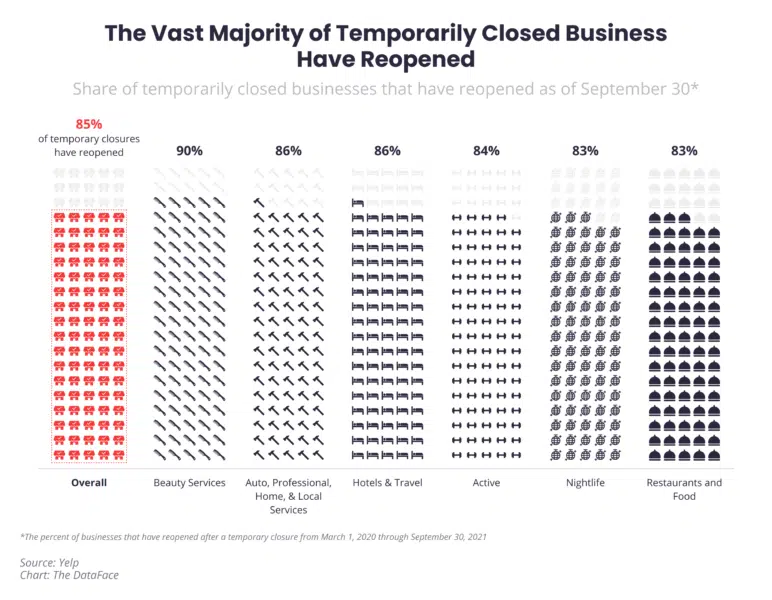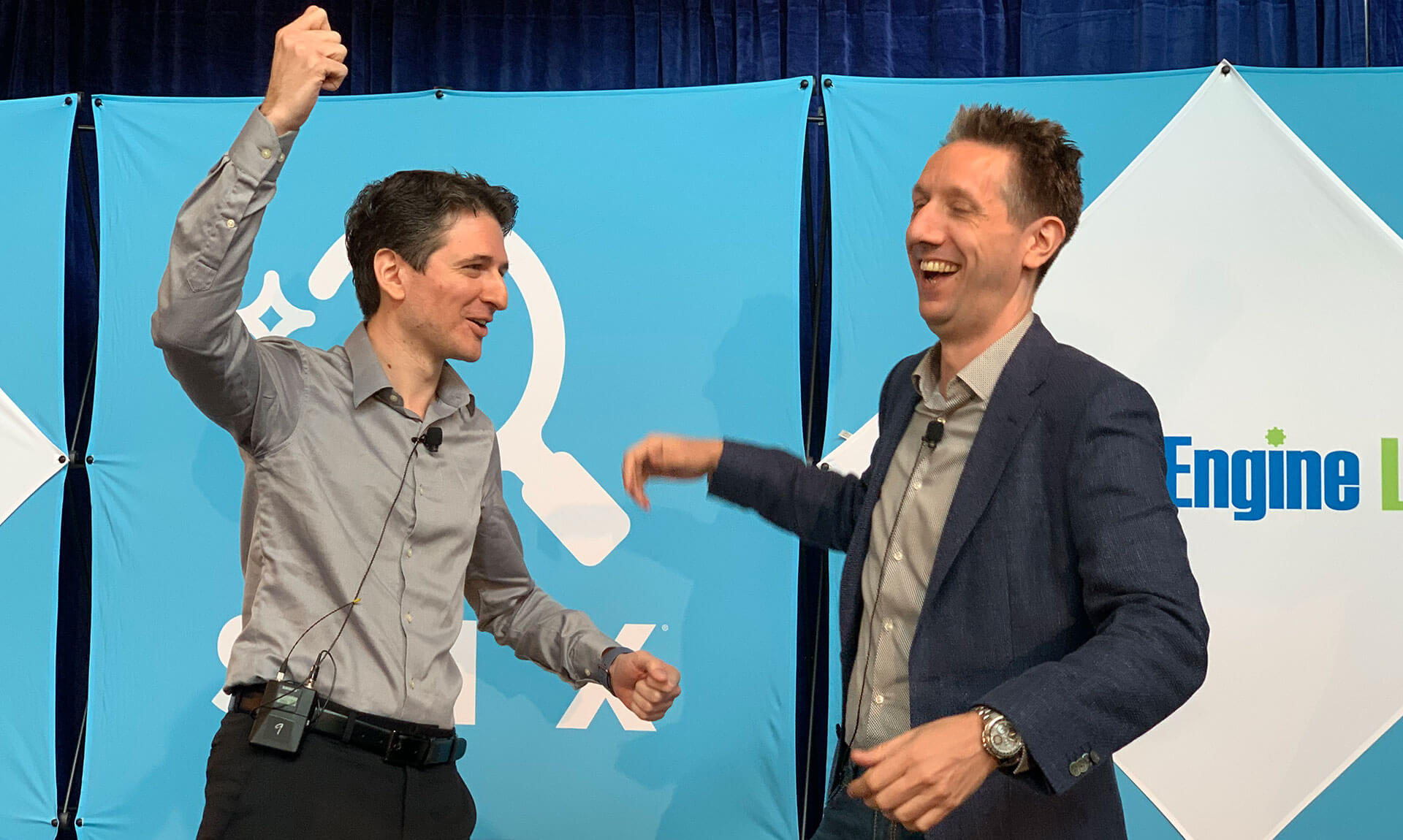Consumer interest in nightlife, entertainment, fitness businesses surge; Thursday’s daily brief
And holiday sales will break a new record as Cyber Week growth slows down.
Search Engine Land’s daily brief features daily insights, news, tips, and essential bits of wisdom for today’s search marketer. If you would like to read this before the rest of the internet does, sign up here to get it delivered to your inbox daily.
Good morning, Marketers, “What was that one taco place we ordered from last summer?”
Search isn’t just conducted on the world wide web — it occurs in inboxes, order histories, the DMs and more. Search engines are focused on helping us find the new information we’re looking for and, although some degree of personalization impacts the results, it’s very difficult to remember which listing you clicked on if it wasn’t in the top positions or a brand you recognize (which speaks to the importance of branding).
Back to my greeting at the top: My partner wanted to order from that same place again and it took us 30 minutes — both searching our inboxes, order histories and various food delivery platforms — to finally find the restaurant. “That is sad,” my colleague Barry Schwartz said when I told him about it. It is sad that platforms haven’t prioritized their internal search features to more quickly and accurately surface our historical interactions — if you’ve ever had to search by date in Gmail, you probably know what I’m talking about. This could have been lost business for that restaurant and, in a more general sense, diminishes our marketing efforts because it’s not very useful to be top-of-mind if the inability to locate a piece of crucial information prevents prospective customers from converting.
George Nguyen,
Editor
Business reopenings have flattened while new leisure and hospitality openings drove growth, according to Yelp

Eighty-five percent of temporarily closed businesses in the U.S. since the onset of the pandemic have reopened as of September 30, 2021, according to Yelp. In Q3 2021, new hotels (up 32% YoY), nightlife (up 30% YoY) and beauty (up 7% YoY) businesses drove openings, although total new business openings nationwide have flattened (increasing just 1% YoY). Consumer interest in the nightlife, fitness and entertainment sectors has also risen substantially — interest in dance clubs is up 67%, yoga is up 41% and indoor play centers are up 204%, for example.
Why we care. These statistics give us a general idea of how local businesses are operating and what’s top-of-mind for consumers. Business reopenings have decreased, which may mean that temporarily closed businesses are becoming less common and that local economies are adapting. While leisure and hospitality drove new business openings, these businesses may still be navigating a labor shortage, which can severely impact the ability to serve customers and undermine marketing efforts. The restaurant and food industry is facing a similar labor shortage, along with rising food prices, which may explain the diminished growth nationwide. In the nightlife, fitness and entertainment industries, consumer interest has exceeded 2019 levels across the board — save for movie theaters — which may indicate less hesitancy among consumers to engage in activities where social distancing is difficult or impossible.
These statistics can be interpreted as generally positive, but it’s important to remember that it’s historical data. The pandemic is still here and so are its side effects: Inflation is at its fastest rate in 13 years, there is a labor shortage in certain sectors, mask mandates remain in effect in some states, certain cities have vaccine requirements for indoor businesses and supply chain difficulties are trickling down to customers. In addition, we are approaching the holiday season, which saw a substantial spike in COVID cases last year — business owners and marketers should have a plan in place should history repeat itself.
Holiday sales are predicted to break a new record even though Cyber Week growth is slowing

U.S. online holiday sales will reach a new record, $207 billion, from November 1 to December 31, according to Adobe’s Holiday Shopping Forecast. That’s up 10% YoY, a strong growth rate after a year in which the pandemic drove customers towards e-commerce. However, major shopping holidays seem to be losing steam (see the chart above): While Cyber Week (Thanksgiving through Cyber Monday) is expected to drive $36 billion in online spending (17% of the entire holiday season), growth has slowed, coming in at just 5% YoY — half the rate of the season’s overall growth. Nevertheless, Adobe expects Cyber Monday to remain the biggest shopping day of the year, although the three major shopping days (Black Friday, Cyber Monday and Thanksgiving) are growing less than the season overall.
Here are some more quick stats from the report:
- U.S. consumers will pay 9% more on average during Cyber Week this year, compared to the last holiday season.
- Out-of-stock messages are up 172% vs. pre-pandemic period (Jan 2020); and up 360% vs. Jan 2019.
- Online revenue from Buy Now Pay Later (BNPL) this year has been 10% higher than 2020 and 45% higher than 2019. Shoppers are also using BNPL for less expensive orders, with the minimum order value dropping to $225 (a 12% decrease YoY).
Why we care. “We are entering a second holiday season where the pandemic will dictate the terms,” said Patrick Brown, vice president of growth marketing and insights at Adobe, “Limited product availability, higher prices, and concerns about shipping delays will drive another surge towards e-commerce, as it provides more flexibility in how and when consumers choose to shop.”
Additionally, Cyber Week’s diminished growth is something we’re also seeing for other major shopping holidays — Memorial Day, Labor Day and President’s Day grew on average 16 percentage points slower in two-year growth than the seven days leading up to them, according to the report. This may indicate that retailers are spreading out their sales over more days and/or a shift in when consumers are shopping.
After 13 years, Frédéric Dubut, principal product manager, core search & AI, departs Microsoft

After thirteen years, Frédéric Dubut, principal PM manager, core search & AI at Microsoft, announced his departure on Monday. Dubut has been an avid contributor to the search community, lending his insights into the inner workings of Bing for our Bing SEO guide as well as speaking at SMX on webspam and penalties, Bing’s “quest for intelligent search” and more.
Why we care. In addition to being an industry, search marketing is also a community of professionals that do our best to share what we know so that our colleagues and the brands they work for can succeed. In his role at Microsoft, Frédéric Dubut exemplified these qualities and greatly contributed to the industry’s understanding of how Bing crawls, indexes and ranks. Dubut has not disclosed where he’s headed next, nevertheless, we hope the best for him and are optimistic that whoever steps into his now-former role will also be a steward and advocate for SEOs.
Rethinking ROAS, the Search Quality Evaluator Guidelines and creative briefs
The ROAS pathology: How revenue-based optimization is selling you short. “As ad channels like Google Shopping become increasingly hands-off in nature, the true competitive advantage will not be in bidding itself,” wrote Mike Ryan, head of retail insights at Smarter Ecommerce, “But rather in being able to determine the actual ROI more realistically than your competitors.” Ryan’s article highlights the potential dangers of ROAS as a KPI and how advertisers can stay ahead of the competition by ditching this metric.
Dive deep into the refreshed Search Quality Evaluator Guidelines. On Tuesday, Google announced an update of its Search Quality Evaluator Guidelines — the first update in over a year. Jennifer Slegg, founder of The SEM Post and SMX speaker, has published her very detailed guide to all the latest changes, even the ones not mentioned in the change log.
Types of creative briefs. This week’s Marketoonist pokes fun at the many approaches marketers and their agency counterparts take in coming up with a creative game plan. “Because most marketers give insufficient attention to the creative brief, this gives an advantage to the few that do,” said Marketoonist creator Tom Fishburne, “Inspired briefs attract inspired teams and lead to inspired work.”
We’ve curated our picks from across the web so you can retire your feed reader
- 5 principles of an ideal SEO team structure – Kevin Indig
- Alphabet CEO Sundar Pichai calls for federal tech regulation, investments in cybersecurity – TechCrunch
- Google Centerpiece Annotation – Primary Content Of Page & Site – Search Engine Roundtable
- How to identify ranking gaps in Google’s People Also Ask (PAA) SERP feature using Semrush [Tutorial] – GSQI
- Yoast SEO 17.4: Performance, web stories and News SEO – Yoast
Contributing authors are invited to create content for Search Engine Land and are chosen for their expertise and contribution to the search community. Our contributors work under the oversight of the editorial staff and contributions are checked for quality and relevance to our readers. The opinions they express are their own.
Related stories
New on Search Engine Land